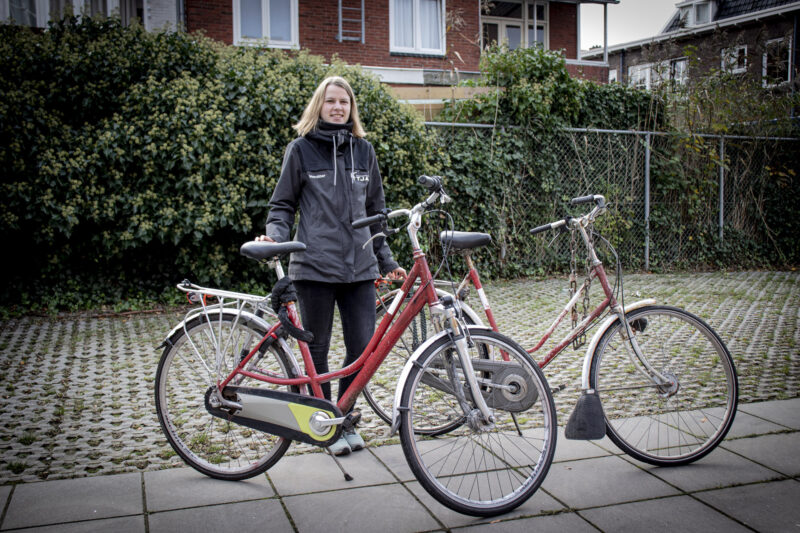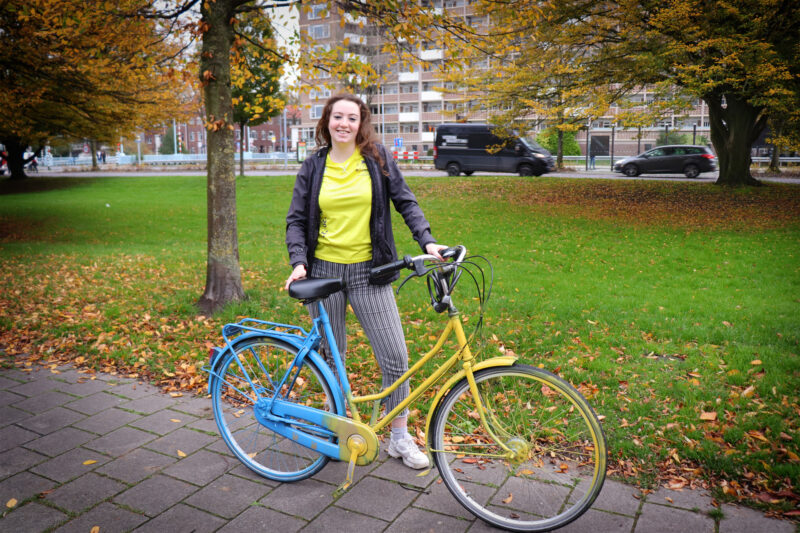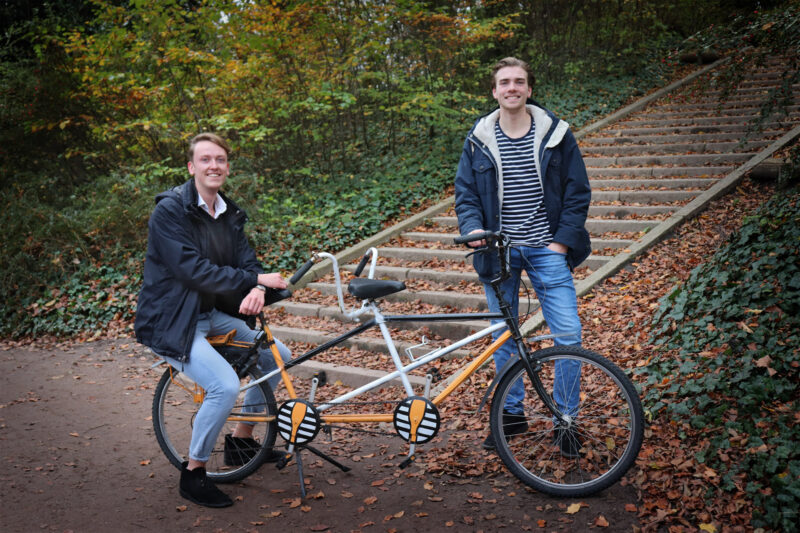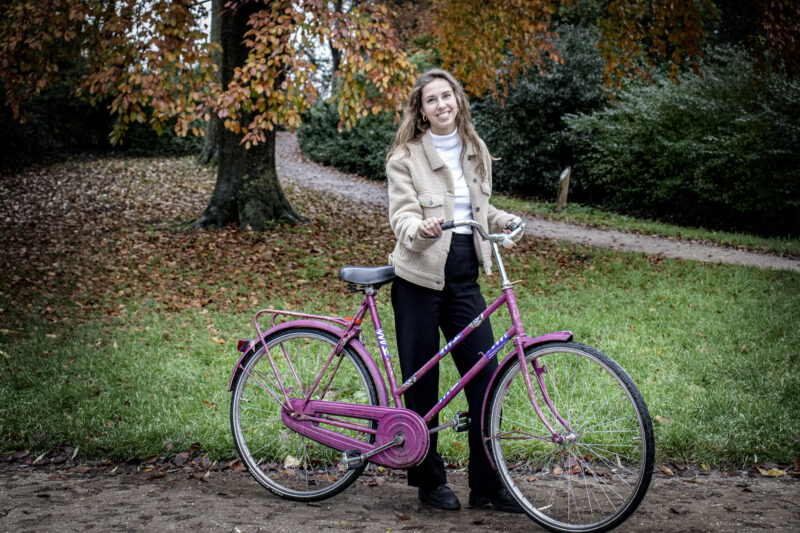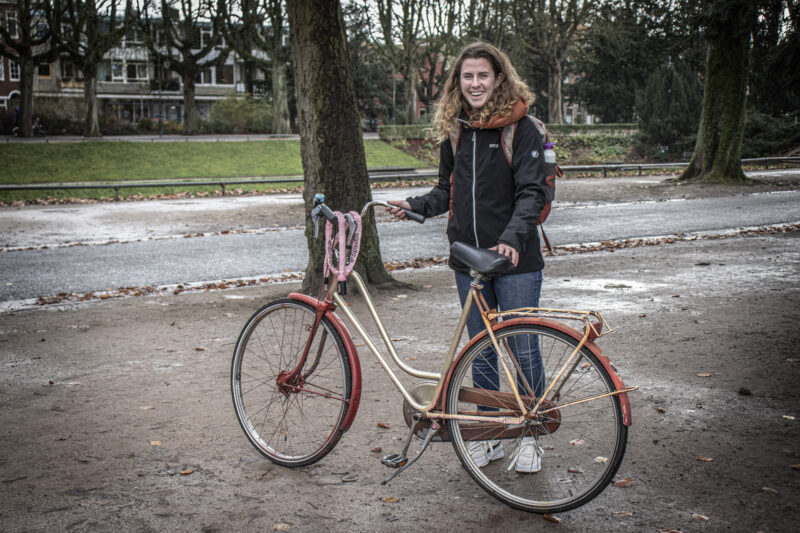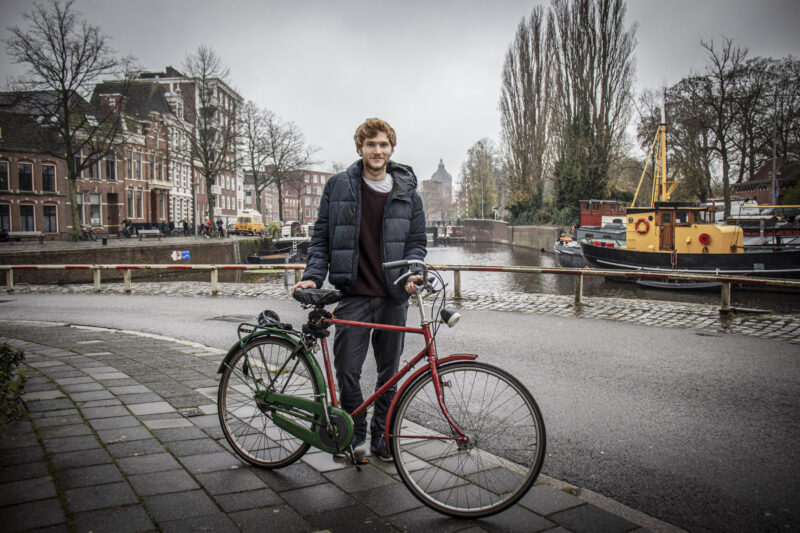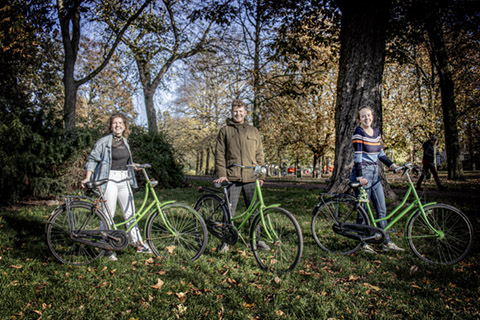
Painting bikes in club colours
Swapfiets poses threat to student tradition
It’s Saturday, October 3. Volleyball association Veracles has a home game at the ACLO, as evidenced by the myriad of bikes painted in green and black occupying the racks. ‘It just gives you that Veracles feeling when you arrive’, says vice-president Ilse Bouwhuis. ‘It feels like a homecoming.’
Veracles isn’t the only Groningen sports club that has a tradition of painting its members’ bikes in club colours. Skating association Tjas uses red and white, volleyball club Donitas is yellow and blue, and at hockey association GCHC, its members paint their bikes in the club’s anniversary colours red, orange, and gold.
Rowing club Gyas probably has the largest number of colourful bikes. During the annual introduction camp, almost all new members paint their bikes in the club’s colours black, white, and cognac. ‘They bring their own spray cans and everyone shares’, says Djimmer Riemersma with the introduction committee. Any leftover cans are kept in the boat house to use on bikes that need a touch-up.
Swapfiets
The tradition has been around for decades, but the colourful club bikes are slowly disappearing from the streets. What happened? It’s all due to the rise of Swapfiets, the lease bicycle with the blue front tyre, which people aren’t allowed to paint. ‘That means some people can’t paint their bikes in their club colours’, says Ilse. ‘Two of my teammates have those bikes and they’re really sad about it.’
Seeing the bikes just gives you that Veracles feeling
It got so bad that tennis club TAM has put a stop to the bike painting. ‘Swapfiets is so popular that we didn’t have enough painted bikes to use as a promotional tool during the KEI week’, says Brenda Wenniger, a 2019 board member. Her board ended up picking different promotional gadgets, like purple scrunchies and beer bottle openers.
Onno Huyge, commercial director at Swapfiets, studied in Groningen. He appreciates the traditions and is sad to see that his company poses a threat. ‘But if we want to keep providing our service on a large scale, we can’t allow people to personalise our bikes like that’, he says. He thinks adding an extra bell in your club’s colours is a good solution. ‘You can install it on your new bike whenever you swap it out. That way you’ll always have a recognisable bike.’
Tape
Tjas has already been implementing this strategy. ‘Our members use club stickers and bike bells’, says president Laura de Jonge. Some Gyas members take it a little further. ‘One girl wanted to join in so badly that she put tape all over her Swapfiets, so she could paint it anyway’, says Djimmer.
Why are members so keen to paint their bikes in club colours? ‘It’s a great way to feel connected to the association, to feel like you’re a part of something’, says Katie Wiersma with Donitas’ activity committee. Djimmer agrees: ‘During rowing competitions, the whole club follows along on the waterfront, and it’s great to see all those bikes in the same colour.’
That certainly was Ilse’s reason to paint her bike. ‘Every time I get on my bike it reminds me that I’m part of the association. When I recognise another member on the road, we always wave at each other’, she says.
Promotional tool
In spite of Swapfiets’ competition, the associations refuse to give up their tradition. Volleyball club Kroton has even been trying extra hard to convince its members to paint their bikes in their colours. ‘Teams can earn points for each painted bike and win cool prizes’, says president Eva Raga Oroño. ‘But that does mean that members who have a Swapfiets can’t participate.’
People tend to notice when a stranger is riding a Tjas bike
Many associations have been organising painting events, where members can have their bikes painted for a few euros. ‘It’s a great way to promote your club’, says Katie with Donitas. ‘But we don’t make any money from the event itself.’ This year, Donitas painted the bikes in special anniversary colours: the number 50 in gold on a background of club colours yellow and blue.
Hockey club GCHC also made anniversary bikes; the association turned ninety years old last year. ‘We took old bikes that had flat tyres or saddles missing from members’ houses and painted them’, says coordinator Anne Mensinga. It was the club’s way of raising awareness of the anniversary and raise money for a big party. ‘It didn’t just help out the bike’s owners and put some money in the anniversary committee’s bank account, but it also ensured the celebrations had a sustainable aspect to them.’
Recognisable
At Tjas, they paint their new members’ bikes red and white during the introduction period. ‘Mainly because it makes the bikes more recognisable and fun’, says Laura. But that’s not the only reason. ‘Painted bikes don’t get stolen as much. People tend to notice when a stranger is riding a Tjas bike’, she says. ‘I actually once found a stolen bike that belonged to a friend of mine. Unfortunately, by the time she came to get it, it had been moved.’
Some students bring their good bikes from home and don’t want it painted, or they want their bikes to look ‘professional’. ‘But you can also make your good bicycle look crappy in an effort to deter thieves’, says Laura. Most students actually have crappy bikes, though, and just want to make them a little prettier. ‘I had this old, ugly bike, and it looked much better afterwards.’

